Where Should You Retire?
Knowing the perfect place to retire is crucial to living out the rest of our days in happiness. You've put in the hard work, and now the money is finally there to make that big and hopefully final move! But whatever you do, don't retire in these 25 states!
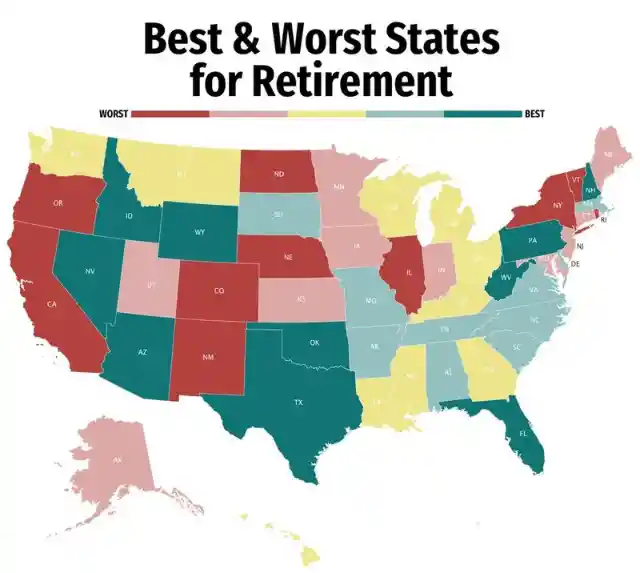
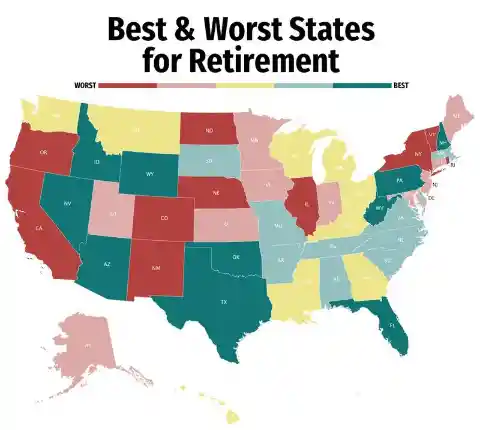
Retirement marks a paradigm shift in a person’s life, and it is imperative to consult various sources when considering where you'll live. We've ranked the best states to retire in, and be warned that the ones listed on the last 25 slides are better to be avoided!
50. Hawaii
Cost of living: 87 percent above U.S. average
Best city: Maunawili Population: 1.4 Million Pro: Niche.com states that the best city for retirees in this tropical state is Maunawili on the island of Oʻahu. You can find popular hiking destinations here, which are close to the state capital, Honolulu. Hawaii, as it is widely regarded, is full of nature and water sports.


Con: First things first, the cost of living in Hawaii is among the highest in the US, and it is even higher than the other sunshine state, California. Most of the people here fail to meet U.S. poverty guidelines. Yes, you heard that right!
49. California
Cost of living: 52 percent above the U.S. average
Best city: Yahoo! Finance says Beverly Hills Population: 39.56 million (as of 2018, U.S. Census Bureau) Pro: The state is home to forests, beaches, deserts, and more, so it becomes hard to argue against California’s natural beauty. If you crave fast-paced living, it is the birthplace of big cities that could provide you just that!


Con: U.S. Census Bureau states that 19 percent of California’s population lives in poverty. Moreover, California has the second-highest cost of living after Hawaii. Now you don't want to worry about running out on money when you retire, do you?
48. Massachusetts
Cost of living: 38 percent above the U.S. average
Best city: Forbes says Northampton Population: 6.902 million (as of 2018, U.S. Census Bureau) Pro: This is one state with a lot of history–be it the landing place of the Mayflower, the Boston Tea Party, or one of the 13 original colonies.


Con: Kiplinger says that the Bay State has lots of costs for retirees. The cost of living is considerably higher than the U.S. average. Moreover, if you hate the cold, you can duly choose to ignore the East Coast winters, which will make chills run down your spine. YIKES!
47. Alaska
Cost of living: 32 percent above U.S. average
Best city: Yahoo! Finance says Anchorage Population: 737,438 (as of 2018, U.S. Census Bureau) Pro: According to Kiplinger, the Last Frontier is extremely tax-friendly to retirees. But as should be the case, not many people take advantage of this as Alaska has a small population of seniors.


Con: As stated above, the cost of living here is pretty high compared to the U.S. average. If you are looking forward to spending your retirement period in a big city, Alaska for sure isn’t your state!
46. New Jersey
Cost of living: 27 percent above U.S. average
Best city: NJ.com says Long Beach Township, Ocean County Population: 8.909 million (as of 2018, says U.S. Census Bureau) Pro: During your golden years, you can see and do many things in New Jersey. You can check out the ocean views in Ocean City, walk the boardwalk or take a quick train ride into New York City. Known as the Garden State, it is rich in its history.


Con: New Jersey has a much higher cost of living if you compare it with places like Montana and South Dakota. Property taxes are pricey, and so is medical care. If you are looking to save some money, look elsewhere.
45. Connecticut
Cost of living: 24 percent above the U.S. average
Best city: AreaVibes.com says, Darien Population: 3.573 million (as of 2018, U.S. Census Bureau) Pro: Kiplinger says that in this state, income for seniors is some of the highest in the U.S. If you pick a retirement job, you may be able to afford it despite the high cost of living.


Con: With real estate taxes some of the worst in the nation, it is not very tax-friendly to retirees. There aren’t many Social Security benefits to alleviate the burden, either. Yeah, so let's look somewhere else?
44. New York
Cost of living: 22 percent above U.S. average
Best city: Yahoo! Finance says Great Neck Population: 19.54 million (as of 2018, says U.S. Census Bureau) Pro: Being very walkable with many necessities nearby and delivery services abound, New York City might be good for retirees. Living quarters are very manageable given the small apartments.


Con: Despite being fun and walkable, New York is only considered to be feasible for well-to-do retirees. Kiplinger says 65 plus individuals suffer high poverty rates because it is not very tax-friendly to retirees.
43. Rhode Island
Cost of living: 22 percent above U.S. average
Best city: Niche.com says Jamestown Population: 1.057 million (as of 2018, says U.S. Census Bureau) Pro: Rhode Island is one of the original 13 colonies of the U.S, and thus, it has a lot in store for history buffs and ocean views for nature lovers. If you love to sightsee, it is located near huge touristy, metropolitan areas.


Con: Kiplinger says that this small eastern state isn’t very tax-friendly. The high cost of living could also make a dent in the retiree’s wallet.
42. Washington
Cost of living: 21 percent above U.S. average
Best city: Vancouver Population: 7.1 million Pro: If you crave the Pacific Northwest lifestyle at budget prices, you might want to head to Vancouver. In Vancouver, you can find more affordability and the lack of a state income tax.


Con: Although its cost of living is considerably less compared to California and Hawaii, it could still prove to be an obstacle for many. The average income for households 65 plus stands at over $55K, so that could provide equilibrium.
41. New Hampshire
Cost of living: 18 percent above U.S. average
Best city: Gilford Population: 1.3 million Pro: Kiplinger says that it is quite tax-friendly in New Hampshire because it doesn’t tax any retirement income. According to the United Health Foundation, the state ranks fifth for senior health. Its picturesque New England landscapes could also prove to be an added benefit.


Con: The cost of living is pretty high compared to the national average. Other considerations include cold winters and humid summers.
40. Oregon
Cost of living: 18 percent above U.S. average
Best city: Gold Beach Population: 4 million Pro: If you are an outdoorsy senior, there’s lots of nature to enjoy. Moreover, Oregon usually has 2.6 percent lower healthcare costs for a retired couple than the nation’s average.


Con: It doesn’t help that Oregon has one of the highest state income taxes in the U.S. at 9.9 percent. With an average of just over $45K, income for seniors is pretty low.
39. Maryland
Cost of living: 17 percent above U.S. average
Best city: Chevy Chase village Population: 6.0 million Pro: Its average household income is the second-highest in the U.S., on average about $70,874 for people who are over 65 plus. It is home to Baltimore city and is also very close to Washington D.C.


Con: It might be true that you will be making more money here, but the income gets heavily taxed. There’s also an estate and inheritance tax.
38. Colorado
Cost of living: 17 percent above U.S. average
Best city: Colorado Springs Population: 5.4 million Pro: In the United Health Foundation’s senior health rankings, Colorado ranks fourth. This state is even more desirable to live in because it has low rates of obesity and physical inactivity in its senior populations.


Con: If you are thinking of buying a property in Colorado, beware of the sky-high prices in competitive places like Denver. Although you might end up enjoying the pleasant weather, the state’s high altitude will take some adjusting.
37. Vermont
Cost of living: 12 percent above the U.S. average
Best city: Niche.com says Hartford Population: 626,299 (as of 2018, says U.S. Census Bureau) Pro: United Health Foundation’s rankings say that the Green Mountain State ranks highly for its senior healthcare. If you are a nature lover, you are bound to appreciate its lush environment with many trees, lakes, rivers, wildlife, and scenic views.
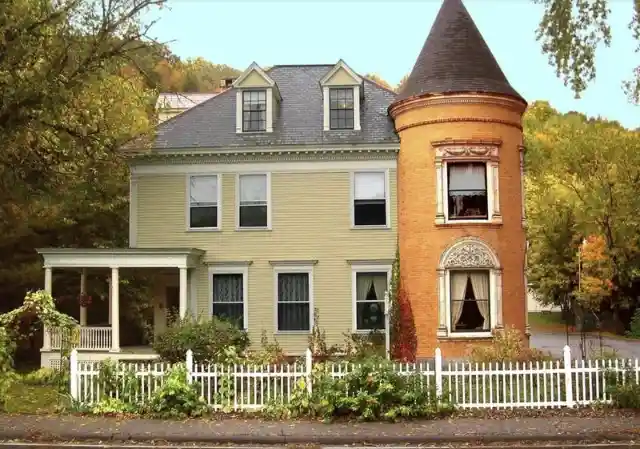

Con: Kiplinger says that the state in which Bernie Sanders resides as Senator is one of the “Least Tax-Friendly.” What makes it even harder for low-income seniors to survive is the high cost of living.
36. Delaware
Cost of living: 11 percent above U.S. average
Best city: Niche.com says Rehoboth Beach Population: 967,171 (as of 2018, U.S. Census Bureau) Pro: Kiplinger rated it as tax-friendly, and that stands true because Delaware doesn’t tax Social Security benefits! For senior citizens, another sweet deal comes in the form of exemption from certain amounts of investment and pension income for people 60 plus.


Con: Kiplinger says that the cost of living is pretty high. Making it difficult to afford necessary things in Delaware for some seniors.
35. Virginia
Cost of living: 7 percent above U.S. average
Best city: Roanoke Population: 8.3 million Pro: Incomes are high in Virginia, so that should balance out the high cost of living. Healthcare, too is comparatively inexpensive. Moreover, residents 65 plus can deduct $12K of their income, and also, Social Security isn’t taxed!


Con: If you are into big city living like Los Angeles or New York City, look elsewhere. However, Virginia does have cool cities to check out, like Richmond, Roanoke, and Lexington.
34. Utah
Cost of living: 4 percent above U.S. average
Best city: Salt lake city Population: 2.9 million Pro: According to the United Health Foundation, Utah’s healthcare ranks second for seniors. If you are an outdoorsy person, you can take advantage of five national parks, five national forests, and 43 state parks.


Con: Utah taxes Social Security which makes it kind of less tax-friendly to retirees. It also has the third-lowest poverty rate in the country for seniors.
33. Nevada
Cost of living: 4 percent above U.S. average
Best city: Winchester Population: 2.8 million Pro: No state income tax makes this state more liveable as compared to other states. Poverty rates for seniors stand at 8.4 percent compared with the U.S. average of 9.4 percent. It is also home to Las Vegas!


Con: The temperatures can be extreme, ranging from 50 to 120 degrees Fahrenheit. Nevada is also the driest state in the U.S. because of its year-round semi-arid desert climate.
32. Minnesota
Cost of living: 4 percent above U.S. average
Best city: Osseo Population: 5.5 million Pro: If you are a health-focused retiree, this state could make the list because the United Health Foundation ranked it as the “healthiest in the country for seniors.” The renowned Mayo Clinic in Rochester is also located in Minnesota.


Con: Higher than the average cost of living and below-average annual income is not one of the greatest combinations to have. Retirement incomes aren’t exempted from tax either.
31. South Dakota
Cost of living: 4 percent above U.S. average
Best city: Niche.com says, Hot Springs Population: 882,235 (as of 2018, says U.S. Census Bureau) Pro: Kiplinger labeled the home of Mount Rushmore as “Most Tax-Friendly.” If you like being in the lap of mother nature, you are bound to appreciate its mountains and prairies.


Con: Before moving here, make sure that you’re OK with blizzards and freezing weather. Being one of the least populated states, you might also miss the big city feel.
30. Montana
Cost of living: 3 percent above U.S. average
Best city: Niche.com says Glasgow Population: 1.062 million, says the U.S. Census Bureau Pro: You can find natural wonders like Glacier and Yellowstone national parks in Montana. According to Kiplinger, it has one of the highest populations of 65+ individuals.


Con: Kiplinger says that Montana is “Not Tax-Friendly” because most retirement incomes, including Social Security, are taxed. If you are not into nature that much, there isn’t a lot to do in this state.
29. Arizona
Cost of living: 3 percent above U.S. average
Best city: Green Valley Population: 6.7 million Pro: Home to The Grand Canyon, it is one of the most popular retirement destinations for those sick of icy winters because of its sunshine and beautiful desert landscape.


Con: It becomes unbearable to live here during the summertime because of dry heat. The temperature in some of the localities can soar up to 107 degrees Fahrenheit! The average household income for seniors to0 hovers 10.8 percent below the national average.
28. North Dakota
Cost of living: One percent above the U.S. average
Best city: Niche.com says Rugby Population: 760,077 (as of 2018, says U.S. Census Bureau) Pro: According to Kiplinger, North Dakota is tax-friendly to retirees and claims a low living cost. If you are into nature, its natural landscapes are a thing to behold!


Con: Having a population of just 760,077, it isn’t the best place for city folk. The state also taxes retirement income.
27. Florida
Cost of living: 1 percent above U.S. average
Best city: Jacksonville Population: 19.9 million Pro: In the United States, Florida is probably one of the most tax-friendly states. Couple that with the endless sunshine, and Florida is home to the highest share of seniors in the U.S.


Con: Heat and humidity can prove to be pretty nasty for seniors with poor health. Then comes the danger of lightning storms, intense thunder, and hurricanes.
26. Wyoming
Cost of living: U.S. average
Best city: SmartAsset says, Cody Population: 577,737 (as of 2018, says U.S. Census Bureau) Pro: Wyoming was ranked fifth overall in its fiscal health—out of 50 states according to the Mercatus Center. Moreover, there’s no state income tax either!


Con: It has one of the smallest populations in the U.S. so if you are a city-dweller, look elsewhere. There’s not a giant metropolitan area in sight.
25. Maine
Cost of living: 2 percent below the U.S. average
Best city: Portland Population: 1.3 million Pro: You would appreciate Maine if you like lobsters. If you are a retiree living off retirement income and savings, Maine’s below the national average cost of living and healthcare costs will make things easier for you.


Con: Most retirement income is taxable but on the other hand, Social Security isn’t taxed and estate tax only applies to estates worth $11.8 million and above. Kipling says that the income levels aren’t high with senior households making 25.2 percent below the national average.
24. Pennsylvania
Cost of living: 3 percent below the U.S. average
Best city: Pittsburgh Population: 12.8 million Pro: Pittsburgh was named as the best city in the U.S. to retire in by Forbes! It is very walkable and bikeable, and it also has a high number of doctors per capita.


Con: Pennsylvania’s fiscal health is rated at 45 out of all the 50 states by George Mason University. Pennsylvania’s future is questionable because it isn’t sturdy in its own budget.
23. Wisconsin
Cost of living: 4 percent below the U.S. average
Best city: Madison Population: 5.8 million Pro: There are some tax breaks for low-income residents’ retirement income, and living costs are low. It also has some of the best cheese in the nation, as well as cheese curds, making it absolute heaven for cheese lovers!


Con: It has the lowest household income for people 65 and older in the nation, and Wisconsin isn’t very tax-friendly either. Healthcare costs, too, are higher than the U.S. average.
22. Illinois
Cost of living: 4 percent below the U.S. average
Best city: Leland Grove Population: 12.9 million Pro: It is out in the open that Illinois’ fiscal standing has been declining for a while. On the brighter side of things, its cost of living is below the national average. According to Niche, its suburban town, Leland Grove, is ranked as the best place in Illinois to retire.


Con: When it comes to fiscal soundness, Illinois is the second-lowest ranking. There are high sales taxes, and the tax breaks on a variety of retirement incomes aren’t assured.
21. Idaho
Cost of living: 5 percent below the U.S. average
Best city: Sandpoint Population: 1.6 million Pro: It is an absolute treat for nature lovers as it has everything you could ask for–snow-capped mountains, lakes, canyons, and the rugged landscape.


Con: If the retiree is a big city-dweller, he might not have a good time in Idaho. State tax is six percent, and state income tax is over seven percent.
20. New Mexico
Cost of living: 5 percent below U.S. average
Best city: SmartAsset says Taos Population: 2.095 million (as of 2018, says U.S. Census Bureau) Pro: New Mexico is a gorgeous and most peaceful place to live, so you shouldn’t let the drama on Better Call Saul and Breaking Bad fool you!


Con: Its golden deserts and sunsets might be beautiful, but the same cannot be said about its tax situation. According to Kiplinger, New Mexico is the “Least Tax-Friendly” state as retirement income is taxed here.
19. North Carolina
Cost of living: 5 percent below U.S. average
Best city: Asheville Pro: Compared with most of the country, North Carolina usually has fairly mild weather year-round. Nature lovers will appreciate its lush green landscapes.


Con: At an average of $43,616 for folks 65 years and older, the income levels are low.
18. South Carolina
Cost of living: 7 percent below the U.S. average
Best city: Bluffton Population: 4.8 million Pro: It is an attractive retirement destination because of its mild weather almost all year round. You should be riding easy with taxes being friendly to retirement incomes.


Con: In this southern state, summers can get pretty hot and humid. With high obesity levels, many smokers, and low consumption of veggies, health isn’t the best in South Carolina.
17. Georgia
Cost of living: 7 percent below the U.S. average
Best city: Athens
Population: 10.1 million
Pro: Warm weather and low living costs are two of the most liked things about Georgia. If you are a budget-conscious retiree, its low state taxes are also very appealing.


Con: Georgia has long, hot and humid summers. It gets too sticky, so people avoid the outdoors around noon. All the mosquitos are an added nuisance.
16. Missouri
Cost of living: 10 percent below the U.S. average
Best city: Columbia Population: 6.1 million Pro: Its low cost of living is very appealing for retirees. If you are an avid bookworm, you will appreciate all the famous writers from the “Show Me State” like Maya Angelou, Mark Twain, T.S. Eliot, and more.


Con: For 65 plus persons, the household income levels are also pretty low at a little over $43K. It has poor healthcare for seniors, and its tax situation is mixed.
15. Texas
Cost of living: 10 percent below the U.S. average
Best city: San Marcos Population: 27.0 million Pro: While the average income for folks 65 years of age and older isn’t bad, incomes aren’t taxed heavily in Texas either. Cool cities like Austin and Dallas make Texas even more liveable.


Con: Healthcare is a strong consideration for most retirees, and Texas doesn’t really have affordable healthcare. It also has the sixth-highest senior poverty rate in the U.S. at 10.8 percent.
14. Louisiana
Cost of living: 10 percent below the U.S. average
Best city: Baton Rouge Population: 4.6 million Pro: To keep the seniors busy, Louisiana has a bucket load of sights and activities. It has natural wonders like the swamps and, on the other hand, music and tourist attractions of New Orleans and Baton Rouge.


Con: It has comparatively low income for people 65 years and older, with an average of $50,744. The healthcare costs are 2.1 percent over the U.S. average costs.
13. Nebraska
Cost of living: 12 percent below the U.S. average
Best city: O’Neill Population: 1.9 million Pro: It is a state with good fiscal health coupled with a meager cost of living. Niche.com rated the city of O’Neill an “A” for retiree living.


Con: It is not very tax-friendly to seniors. Unfortunately, most retirement income is taxable; therefore, if this is a pothole in your journey, it's better to look elsewhere!
12. Tennessee
Cost of living: 12 percent below the U.S. average
Best city: Lookout mountain Population: 6.5 million Pro: As it doesn’t levy state income taxes, it is tax-friendly to retirees. Affordability can be experienced here in all the major metro areas as well. Low healthcare costs also sweeten the deal even more.


Con: In July, the temperature can soar up to 92 degrees Fahrenheit. Add some humidity into the mix, and the situation becomes even more grave. Around bigger cities like Nashville and Memphis, traffic isn’t great.
11. Ohio
Cost of living: 12 percent below the U.S. average
Best city: Bellbrook Population: 11.6 million Pro: If you wish to travel to either coast to visit family and friends or go on vacation, Ohio’s central location makes it easier to do so. Social security isn’t taxed, and the cost of living is quite low too.


Con: Its average household income for senior citizens isn’t that high. It might work out for you if you have a lot of savings.
10. Michigan
Cost of living: 12 percent below the U.S. average
Best city: Farmington Population: 9.9 million Pro: Its low poverty rate and low cost of living make Michigan very appealing to retirees. In the Great Lakes state, Social Security isn’t taxed. If you are into water sports, Michigan could welcome you with open arms.


Con: In a few years, Michigan is going to have a complicated tax situation. Seniors who are 67 plus will soon have to choose between deducting Social Security income or $20K of all income sources for singles, $40K for couples.
9. Iowa
Cost of living: 12 percent below the U.S. average
Best city: Iowa city Population: 3.1 million Pro: Iowa has a state income tax break for pension income and no state income tax on Social Security earnings. Designated as 'The City of 'Literature' by UNESCO, Iowa is home to a vibrant cultural scene and famous universities.


Con: Despite Social Security benefits being untaxed, taxes aren’t easy on seniors’ wallets in Iowa.
8. Alabama
Cost of living: 13 percent below the U.S. Average
Best city: Orange Beach Population: 4.8 million Pro: The Heart of Dixie is quite budget-friendly. Social Security benefits are exempt, and moreover, income taxes are from 2 to 5 percent. When it comes to healthcare, most spend 4.4 percent less than the average retired couple.


Con: During spring and November, storms can get intense with lots of rain and thunderstorms. During the summer, Alabama will be hot, hot, hot!
7. Kansas
Cost of living: 14 percent below average Best city: Eureka Population: 2.9 million Pro: In the sunflower state, the cost of living is pretty low. To any nature lovers out there, its scenic plains and prairies are also appealing.


Con: To rectify its budget deficit, Kansas is raising taxes so it can come in good financial shape. Including social security, most retirement incomes will be subject to state taxes with rates from 3.1 to 5.7 percent.
6. Kentucky
Cost of living: 14 percent below the U.S. average
Best city: Lexington Population: 4.4 million Pro: Retirees can enjoy low living costs and a high number of tax breaks in the Bluegrass State. Talking about taxes, Social Security and $41,110 of other income are exempt.


Con: It is not the healthiest place for senior folks as it ranks badly in senior health, with high smoking rates, physical inactivity, and poverty. To take care of seniors, there aren’t many good nursing homes either.
5. Mississippi
Cost of living: 15 percent below the U.S. average
Best city: Hide-A-Way Lake Population: 3.0 million Pro: Mississippi’s sweet tax breaks and low costs on everyday items are two of the most desirable things for seniors. Apart from sporting the lowest property taxes in the country, it also provides an exemption from retirement incomes.


Con: According to the United Health Foundation, the state ranks last for senior health. Its poverty rate for seniors stands at 13.4 percent, making it the worst poverty rate in the country.
4. Indiana
Cost of living: 15 percent below the U.S. average
Best city: Meridian Hills
Population: 6.6 million
Pro: Everyday expenses like food, housing, gas, etc., are much more affordable because Indiana’s cost of living is 15 percent below the national average.


Con: Its annual income is below the U.S. average (21.4 percent below, to be exact). Retirement income, other than Social Security, is taxable at ordinary rates.
3. Oklahoma
Cost of living: 16 percent below the U.S. average
Best city: Nichols Hills Population: 3.9 million Pro: The state doesn’t tax Social Security, and up to $10K can be excluded from retirement income. Low costs of living will also benefit the seniors.


Con: When it comes to senior health, Oklahoma ranks third-worst. There’s a lack of geriatric care and good nursing homes. Moreover, there are high levels of physical inactivity and smoking.
2. West Virginia
Cost of living: 17 percent below the U.S. average
Best city: Niche.com says Lewisburg’ Population: 1.806 million (as of 2018, says U.S. Census Bureau) Pro: At 17 percent below the U.S. average, its cost of living isn’t too bad. USA Today says that the state is known for scenic views, a rich history, grand resorts, and more.


Con: According to Kiplinger, the Mountain State isn’t tax-friendly to retirees. It also ranks low for its fiscal soundness, according to the Mercatus Center at George Mason University.
1. Arkansas
Cost of living: 17 percent below the U.S. average
Best city: Bella Vista Population: 3.0 million Pro: Average health costs being the third lowest for retired couples couple with a low cost of living makes it an absolute treat for retirees. It has been named the ‘Natural state’ because of its wildlife, hot springs, mountains, and rivers.
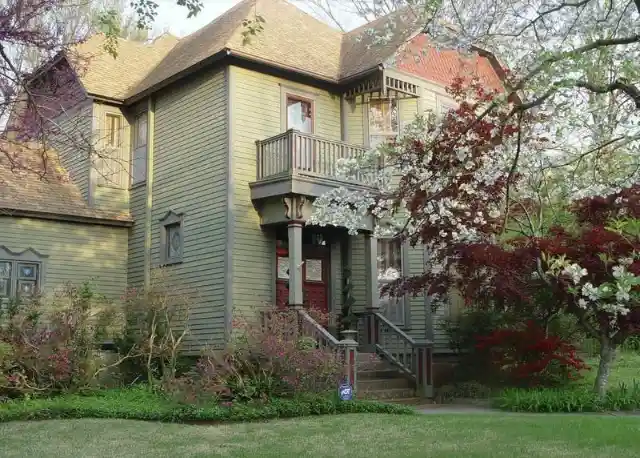
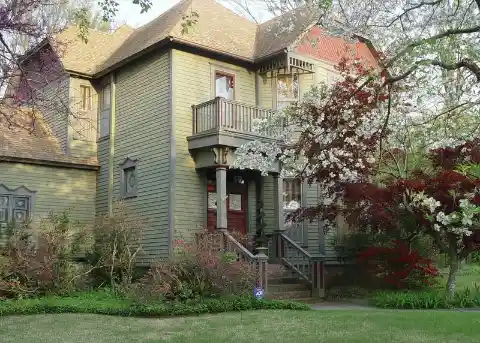
Con: The state taxes aren’t that easy on the wallet while Social Security benefits and up to $6,000 of other retirement income are exempt. Arkansas also has the eighth highest poverty rate for seniors in the U.S. Moreover, it isn’t the place to be for those craving big city living! This piece serves entertainment purposes only so it is advisable that you take it with a grain of salt.